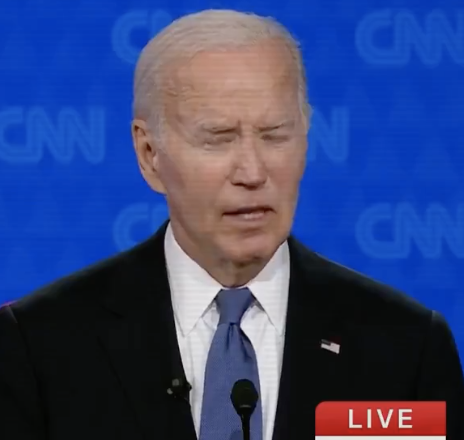As the Israel-Hamas conflict continues to drag on, with no ceasefire in sight before President Biden’s term ends, it’s becoming increasingly clear that the administration’s approach has been plagued by miscalculations and a lack of decisive action.
Despite repeated assurances from President Biden himself about the imminent possibility of a ceasefire, U.S. officials are now privately conceding what many have suspected: the administration’s diplomatic strategy has failed to bridge the gap between Israel and Hamas.
From the outset, Biden’s approach was marked by political optimism – our stupidity – rather than realism.
He frequently hinted at a deal being close, which not only raised false hopes but also misrepresented the complexity of the situation on the ground. The reality, as acknowledged by former and current officials, is that the most contentious issues—those involving security guarantees, troop presence, and the release of hostages—are the toughest to resolve, and Biden’s team seemed unprepared for this challenge.
Daily Caller: ‘Full And Complete Cease-Fire’: Biden Announces Gaza Peace Plan https://t.co/hwewSouxAm
— Ian Hansen 🇺🇸🇺🇸 (@IanHansensX) June 1, 2024
The administration’s strategy appeared to hinge on a misreading of its leverage and influence over both Israel and Hamas. While Biden has been vocal about his support for Israel, which might have been intended to pressure Hamas indirectly, this approach has not translated into substantial progress towards a ceasefire. Instead, it has led to criticisms from various quarters, including within his administration, where over 400 staff members signed an open letter demanding a more aggressive push for a ceasefire, highlighting a significant internal dissent against Biden’s policy.
Moreover, the Biden administration’s handling of the ceasefire negotiations has been criticized for lacking a coherent strategy. The push for a three-phase plan, endorsed by the U.N. Security Council, while well-intentioned, seemed detached from the ground realities where both sides, particularly Hamas, have shown reluctance to compromise. This disconnect between policy formulation in Washington and the intractable dynamics in Gaza underscores a broader critique of Biden’s foreign policy: it often seems more focused on American domestic politics and perceptions rather than the pragmatic necessities of conflict resolution.
Not only does Biden have dementia he's also delusional. There's not one chance in a million Hamas will live up to their obligations.
— Buzios (@Buzios16) June 1, 2024
‘Full And Complete Cease-Fire’: Biden Announces Gaza Peace Plan | The Daily Caller
The administration’s failure to secure a ceasefire also reflects poorly on its broader Middle East policy, where it has struggled to balance support for allies like Israel with the need to address the humanitarian crisis in Gaza. This balancing act has not only failed to advance peace but has arguably worsened the situation, with reports of increased desperation and lawlessness in Gaza, partly attributed to the ineffective distribution of aid and a miscalculation of how military strategies would play out.
As we approach what might be the final months of Biden’s term without a ceasefire, the legacy of his administration’s Middle East policy looks increasingly troubled. The lack of a tangible breakthrough in the Israel-Hamas talks isn’t just a foreign policy setback; it’s a stark reminder of the limits of American influence when not backed by a nuanced understanding of regional politics and a more effective diplomatic strategy.
Israel, Saudi Arabia, Egypt, and Jordan all trust each other more than they do the United States.
— Charles R Baron Jr. (@crbarnjr) September 24, 2024
That's how fucked the Biden, Blinken, and Sullivan Middle East policy has become. Kamala is out to lunch on foreign policy in general.
The Biden-Harris Administration’s approach to the Israel-Hamas ceasefire has been a complete and utter disaster. It is a clusterf*ck characterized by over-optimism, strategic missteps, and a failure to adapt to the evolving demands of the conflict. This has not only prolonged the suffering in Gaza but also highlighted a critical misjudgment in how to leverage U.S. power for peace in one of the world’s most complex conflict zones.
